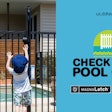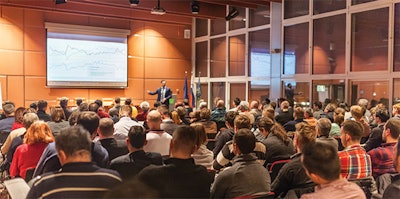
May was National Water Safety Month, an annual event when our entire industry comes together to encourage safer recreational water practices. It's a time to spread the word about water safety through special events and media outreach, as well as a good opportunity to look in the mirror and ask ourselves what we could be doing better.
One company, Pentair, a global leader in pool and spa equipment, has developed a way to increase familiarity with APSP's standards and thus deliver on safety not just in May, but throughout the year.
Ready to Elevate Your Company Program to a Higher Standard?Any company can leverage the ANSI/APSP standards in its training programs. Contact APSP's Carvin DiGiovanni for ideas and details about how to incorporate the standards into your proprietary materials. Simply email DiGiovanni at [email protected]. |
Earlier this year, Pentair rolled out a course on the ANSI/APSP standards relating to suction-entrapment avoidance. It covers the same safety and code-compliance topics taught by APSP instructors at trade shows and regional meetings, but it's geared to reach professionals involved directly in installation and maintenance of pool equipment.
RELATED: A Close Look at the APSP-13 Standard
Pentair collaborated with APSP's Carvin DiGiovanni, vice president, technical & standards, in an effort to match the Association's course curriculum with the specific needs of Pentair's customers.
"People who attend our shows and presentations are being hit with a whole buffet of different presentations in technical and business areas," DiGiovanni says. "And plenty of people take our courses on standards and compliance. What Pentair is doing is taking the teaching of these standards, tying it to the safety theme, then, ultimately focusing on their particular products as having solutions to ANSI/APSP Standard 5 for residential inground pools, Standard 7 for suction entrapment avoidance and Standard 16 for suction fittings."
Traveling Show
Ken Gregory, Pentair compliance and safety manager, has been traveling from coast to coast since January teaching the course. Rick Specht, owner of Pool to Spa Services in Wanatchee, Wash., took the course during a training session in Seattle.
"The class was really good for me," Specht says. "It just solidified the seriousness of a pool system and the responsibility of our industry to be aware of all the things that we can control and have an impact on. For example, when we're called in for a repair we need to know how to assess the existing system and ensure that if pumps are changed out, they stay within the flow design that's been installed there. When we walk away, we know we are the last ones with our hands on the project and we have a responsibility to make sure it's safe."
Specht's two lead service techs sat in on equipment classes and received safety lessons there, too.
"Pentair was all about making the techs really familiar with their products and how to operate them, how to install them, how to program them," Specht says. "Then they coupled in the hydraulics and standards."
That integration of the technical and safety messages is a key part of the program's power and appeal. It shows builders, service pros and remodelers that the technical choices may seem inconsequential, but they have far-reaching implications.
"Let's say you've got a service guy putting in a new pump. He feels that, you know, he's just out there in the field taking care of a pump like he's done many times before. No big deal," Gregory explains. "The question is: What do you do about the drain? Well, if you read ANSI-7 it says if the pool only has a single drain, you're going to need another layer of protection. And more particularly, what is missed a lot of the time is the actual flow rate. If the flow rate is 100 gallons per minute and you're putting 140 through it, then there's a danger there and there could be an entrapment problem. Again, a lot of guys say, 'It's an approved cover, so I don't have to worry about it.' This course teaches them how to calculate and determine what the flow rate is with that new pump using a vacuum gauge and a pressure gauge so they'll know what the TDH is, and from there they can use the pump curve and precisely predict what the flow rate is. If it has a single drain, we'll go through ANSI/APSP 7 and tell them they can eliminate the drain or use an SVRS, or you can change it to a channel drain. There are several options."
Andrew Kanetsky, regional manager for American Pool Management, attended the course at a training seminar in Philadelphia.
"For me and my guys, it reminded us that you do this stuff for a reason," he says. "It's not just about following rules for the sake of following rules. There are real reasons for doing things the correct way."
Stressing Safety
Gregory is justifiably proud of the class he has developed, but is also quick to praise APSP and its own educational offerings.
"I've sat through many of those courses, and they're always excellent," he says. "The instructors are always professional and I get a lot out of them. But it's just like in college. Some professors deliver material in a different manner, and that's all I'm doing. It's the same information, just sort of boiled down. The standard says A, B, C and D. When you're in the field, this is what you do. Our way isn't better. It's just different, and we're finding that our customers react to it very well."
DiGiovanni also supports both the traditional approach and the new one Pentair put together. "What I like about what they're doing is they're going to get a lot more penetration at the grassroots level from people who, in this case, install Pentair products. They're taking a proactive approach to really target those dealers who are going to be touching their equipment and training them on how important the ANSI/APSP standards are."
At the end of the sessions, each attendee gets an electronic version of the relevant ANSI/APSP standards to ensure code compliance doesn't merely rely on a person's memory. DiGiovanni gave Pentair a discount on the standards, and Pentair went a step further by subsidizing part of the cost for its customers. In the end, DiGiovanni says, Pentair's course attendees receive a considerable discount.
RELATED: APSP's Education Program Evolving
"Everybody prints out helpful materials and holds training, but I don't think anyone else goes into the depth that Pentair is doing," Kanetsky says. "They really spent a lot of time and effort on this product. Not just the safety class, but other seminars, too. My guys have been to a lot of training, but this one they agreed went above and beyond, and had excellent materials that were given out. We've all been to classes where it seemed people were there just to get credit for showing up. This wasn't like that at all."
DiGiovanni says Kanetsky isn't alone in lauding Pentair's approach. "I can assure you they're getting results and I'm hearing it's been well received across the board," he says.
When asked whether Pentair's course could serve as a template for other manufacturers to teach standards to their customers, DiGiovanni didn't miss a beat. "Absolutely!" he says. "We are open to providing any manufacturer with a similar program for their particular products using the same concepts that Pentair is using. We can basically share Pentair's program with them to get that same deliverable.
"Pentair has no reservations about sharing this with other manufacturers because ultimately the goal is to train any professional on how to do these things correctly according to the standards and codes."
The take-home version of the standards is also available at a discount to manufacturers willing to partner with the association to provide education.
"Carvin is absolutely right," Gregory says. "Any manufacturer, distributor or even a big builder or chain of service companies can incorporate these same ideas into their own courses. APSP and Pentair are both hoping other companies do just that. We just want to help in any way possible to promote the building of, repairing of, and renovating of pools in a safe manner.
PENTAIR SPONSORS NATIONAL WATER SAFETY MONTHDoubling down on its commitment to safety, Pentair sponsored National Water Safety Month this year, providing vital support to promote water safety throughout the U.S. and abroad. Throughout its 10-year existence, National Water Safety Month has gained attention from governors of all 50 states as they sign water safety proclamations, as well as Olympic swimmers who have highlighed the vital importance of public education regarding safer practices for kids and adults in and around the water. The National Water Safety Month campaign is a joint effort of the American Red Cross, APSP, the National Recreation and Park Association and the World Waterpark Association. The event is celebrated by these organizations and thousands of aquatics facilities and professionals through educational programs, public service announcements, governmental proclamations, dealer and aquatics business promotions and the distribution of water-safety-themed materials in an effort to help prevent drowning and water-related illness and injuries. "We are proud to partner with APSP as a sponsor of National Water Safety Month. As a global leader in the pool and spa industry, Pentair Aquatic Systems is deeply committed to promoting the safe, enjoyable use of swimming pools everywhere," says Marcus Phillips, director of global marketing, aquatic and environmental systems, Pentair. For more information about National Water Safety Month and how to communicate and promote water safety all year long, visit nationalwatersafetymonth.org.
|
















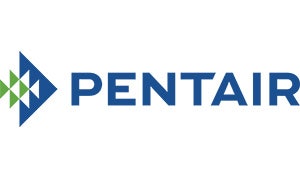










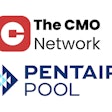


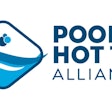



![IPSSA’s incoming President Michael Denham [left], Rose Smoot, IPSSA Executive Director [center] and the outgoing President, Todd Starner [right].](https://img.aquamagazine.com/files/base/abmedia/all/image/2024/04/New_IncomingPres_MikeDenham_RoseSmoot_outgoing_president_ToddStarner_IMG_3920_copy.662682e0cbd3a.png?auto=format%2Ccompress&fit=crop&h=112&q=70&rect=0%2C345%2C3024%2C1701&w=112)

